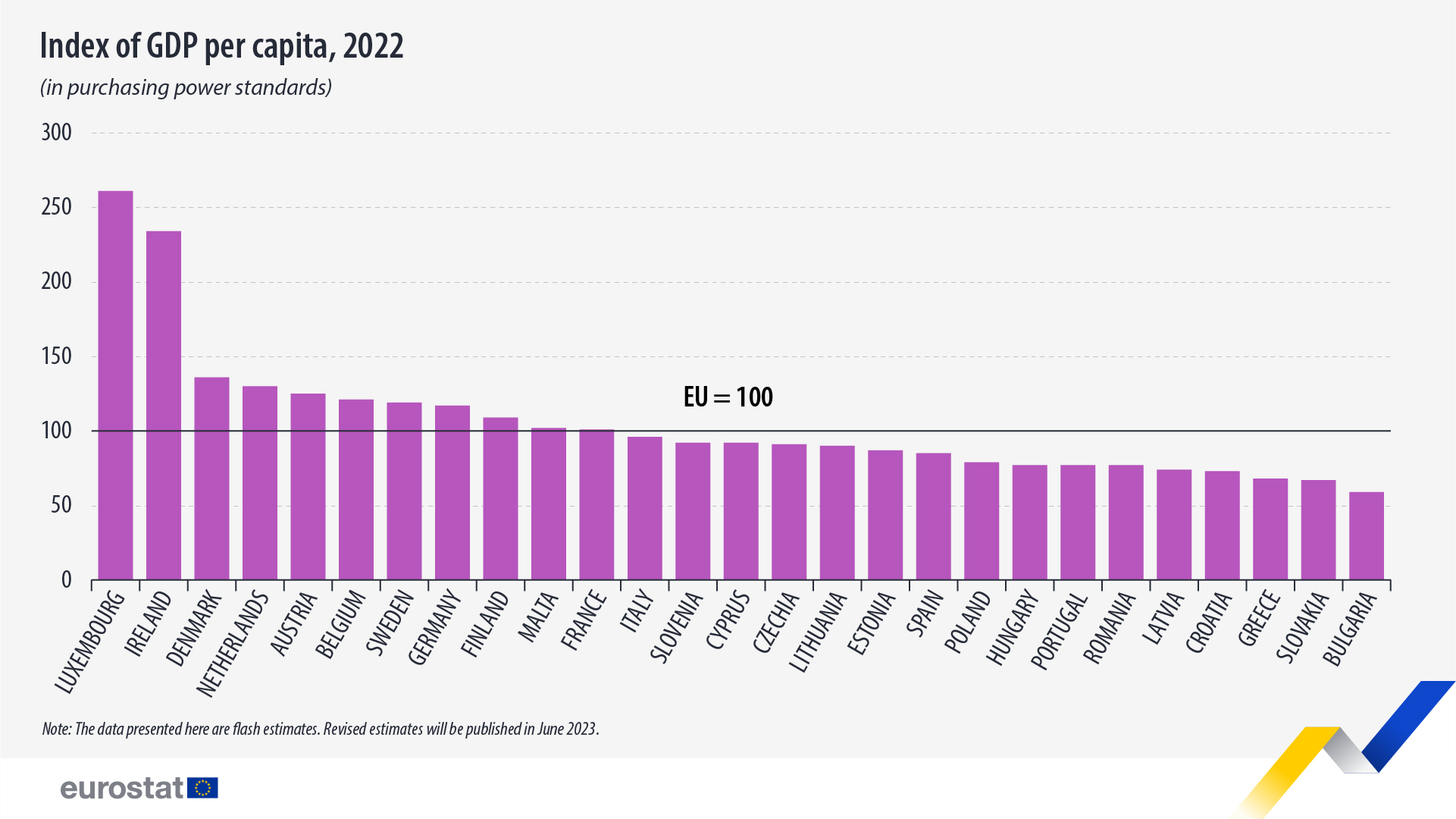Flash PPPs and GDP estimates for 2022 now available

In 2022, gross domestic product (GDP) per capita expressed in purchasing power standards (PPS) ranged between 59% of the EU average in Bulgaria and 261% in Luxembourg.
This information comes from the flash estimates of purchasing power parities and GDP for 2022 published by Eurostat today. The article presents some of the findings from the more detailed Statistics Explained article.
Source dataset: prc_ppp_ind
The data show substantial differences between the EU members in terms of GDP per capita, used to measure economic activity. In 2022, Luxembourg and Ireland recorded the highest levels of GDP per capita (161% and 134% above the EU average, respectively).
They were followed at a distance by Denmark (36% above the EU average), the Netherlands (30%), Austria (25%), Belgium (21%), Sweden (19%) and Germany (17%).
In contrast, Bulgaria (41% below the EU average), Slovakia (33%) and Greece (32%) registered the lowest GDP per capita.
For more information
- Statistics Explained article on purchasing power parities and GDP per capita - flash estimate
- Thematic section dedicated to purchasing power parities
- Database on purchasing power parities
- Metadata on purchasing power parities
- Statistics 4 beginners on GDP
Methodological notes:
- Flash estimates for 2022 presented in this news article are based on GDP and population data for 2022, extracted on 17 March 2023, and the most recent PPPs available. Revised estimates will be published in June 2023.
- Luxembourg: the high GDP per capita in Luxembourg is partly due to the country's large share of cross-border workers in total employment. While contributing to GDP, these workers are not taken into consideration as part of the resident population which is used to calculate GDP per capita.
- Ireland: the high level of GDP per capita in Ireland can be partly explained by the presence of large multinational companies holding intellectual property. The associated contract manufacturing with these assets contributes to GDP, while a large part of the income earned from this production is returned to the companies’ ultimate owners abroad.
If you have any queries, please visit our contact us page.

